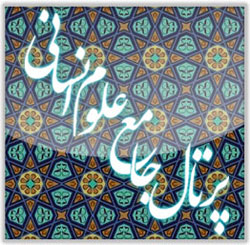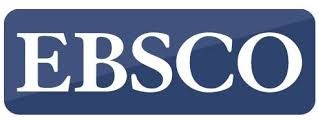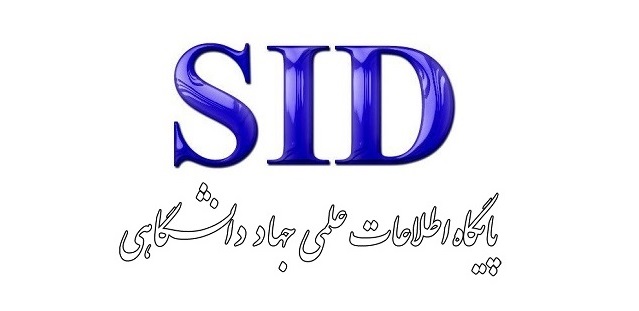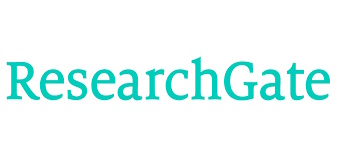Identification and Analysis of Causal Relationships among Factors Influencing the Establishment of Enterprise 2.0 in the Ministry of Sport and Youth
Keywords:
Social Technologies, Enterprise 2.0, DEMATEL Analysis, Thematic Analysis, Ministry of Sport and Youth.Abstract
This study aimed to identify the key factors influencing the establishment of Enterprise 2.0 in the Ministry of Sport and Youth and to analyze the causal relationships among these factors. A mixed-methods design with a sequential exploratory approach was applied. In the qualitative phase, thematic analysis of semi-structured interviews with 15 purposively selected experts (ministry specialists, academics, and technology professionals) was conducted. In the quantitative phase, the DEMATEL technique was used to explore and visualize causal relationships among the identified factors. Validity and reliability were ensured through purposive expert selection, theoretical saturation, systematic analysis, and expert group judgment. The qualitative analysis identified 100 basic themes, 20 organizing themes, and 9 overarching factors: Technological Transformation, Organizational Intelligence, Social Dynamics, Contextual Structures, Technological Incongruence, Support Systems, Organizational Capacity Building, Organizational Agility and Synergy, and Performance Organization. DEMATEL results revealed Social Dynamics, Agility and Synergy, Organizational Intelligence, and Technological Transformation as driving (causal) factors, while Contextual Structures, Support Systems, Capacity Building, Technological Incongruence, and Performance Organization were recognized as effect (influenced) factors. Successful establishment of Enterprise 2.0 in the Ministry of Sport and Youth depends on strengthening key driving forces—especially Social Dynamics, Agility, Organizational Intelligence, and Technological Transformation—to overcome structural and contextual barriers and foster innovation, knowledge sharing, and stakeholder participation.
Downloads
References
Azarian Sousahab, M., Kashef, S. M., Behnam, M., & Badri Azarin, Y. (2020). The Effect of Open-mindedness on Radical Innovation Through Social Networks and Organizational Learning in Private Clubs of the Iranian Football Premier League. Sport Management Studies, 12(63), 113-138. https://smrj.ssrc.ac.ir/article_2040_en.html
Camngca, V. P., Amoah, C., & Ayesu-Koranteng, E. (2024). Underutilization of information communication and technology in the public sector construction project's implementation. Journal of Facilities Management, 22(1), 1-20. https://doi.org/10.1108/JFM-10-2021-0128
Carvalho, T. H. C. S. (2024). Blockchain technology in football: A new way to keep fans engaged? (Master's thesis, Universidad Nova de Lisboa) https://run.unl.pt/handle/10362/166275?mode=full
Das, S., Manna, M., & Modak, S. (2024). HR 2.0: Transformative Strategies for Small and Medium Enterprises. In Innovative Human Resource Management for SMEs (pp. 277-287). https://doi.org/10.15210/hr.v29i2.27375
Faraj, S., & Leonardi, P. M. (2022). Strategic organization in the digital age: Rethinking the concept of technology. Strategic Organization, 20(4), 771-785. https://doi.org/10.1177/14761270221130253
Faruque, M. O., Chowdhury, S., Rabbani, G., & Nure, A. (2024). Technology Adoption and Digital Transformation in Small Businesses: Trends, Challenges, and Opportunities. International Journal for Multidisciplinary Research, 6. https://doi.org/10.36948/ijfmr.2024.v06i05.29207
Groenewald, C. A., Groenewald, E., Uy, F., Kilag, O. K., Rabillas, A., & Cabuenas, M. H. (2024). Organizational Agility: The Role of Information Technology and Contextual Moderators-A Systematic Review. International Multidisciplinary Journal of Research for Innovation, Sustainability, and Excellence (IMJRISE), 1(3), 32-38. https://risejournals.org/index.php/imjrise/article/view/167
Haji Zeinolabedini, M., & Khoshnoud Ghadim, S. (2022). Leveraging Web 2.0 Technologies in Knowledge Management: A Case Study of the Center for Government Management Training. Digital and Smart Libraries Research, 9(2), 69-84. https://lib.journals.pnu.ac.ir/article_9295.html
Hamedi, S. H., Sardari, A., Naami, A., & Norouzi, M. A. (2023). Identifying the Dimensions and Components for Adoption of Social Customer Relationship Management Systems by Professional Users Using Web 2.0 Technology. Value Creation in Business Management, 3(2), 1-19. https://www.jvcbm.ir/article_176675_en.html
Kwok, A. O. J., & Koh, S. G. M. (2018). Is blockchain technology a watershed for tourism development? Current Issues in Tourism. https://doi.org/10.1080/13683500.2018.1513460
Lau, E. K. W. (2024). Knowledge Management and Web 3.0. International Conference on Knowledge Management in Organizations, Cham. https://doi.org/10.1007/978-3-031-63269-3_31
Mubarak, M. F., Jucevicius, G., Shabbir, M., Petraite, M., Ghobakhloo, M., & Evans, R. (2025). Strategic foresight, knowledge management, and open innovation: Drivers of new product development success. Journal of Innovation & Knowledge, 10, 100654. https://doi.org/10.1016/j.jik.2025.100654
Mubarakh, C., Miswanto, M., Siregar, B., Biyanto, F., & Kartika, F. (2025). The Strategic Role of Knowledge Management in Mediating the Relationship Between Servant Leadership and Organizational Value. International Journal of Research and Innovation in Applied Science, X(I), 335-352. https://doi.org/10.51584/ijrias.2025.1001027
Ne'mati, F., & Heydari, M. (2021). Improving Employee Agility Through Organizational Social Media with the Mediating Role of Psychological Conditions. Quarterly Journal of Management and Sustainable Development Studies, 1(3), 141-170. https://www.researchgate.net/publication/322175481_Improving_the_agility_of_employees_through_enterprise_social_media_The_mediating_role_of_psychological_conditions
Nowdeh Farahani, E., & Kazemi Takmili, M. (2023). Policy Ideas, Goals, and Structures of the Comprehensive Youth Institution in Iran. Quarterly Journal of Culture Strategic Studies, 3(1), 9-43. https://www.sid.ir/paper/1121810/en
Omrani, A., & Teimouri Kish, E. (2024). Sample Test Questions, Documented and High-Frequency, for the Recruitment of Sports and Youth Experts. Saman Sanjesh Publications.
Patwary, A. K., Parvez, M. O., Awang, Z., & Bidin, M. F. B. (2024). Navigating Financial Performance in the Culinary Industry: Does Web 2.0 Matter? Journal of Culinary Science & Technology, 1-19. https://doi.org/10.1080/15428052.2024.2361693
Salem, S. (2019). A proposed adoption model for blockchain technology using the unified theory of acceptance and use of technology (UTAUT). Open international journal of informatics, 7(Special Issue 2), 75-84. https://oiji.utm.my/index.php/oiji/article/view/80
Szydłowska, J., & Swacha, J. (2024). Mapping Areas of ICT Application for Sustainable Management. In Adoption of Emerging Information and Communication Technology for Sustainability (pp. 68-86). CRC Press. https://doi.org/10.1201/9781003316572-5
Velandia Pacheco, G., Escobar Castillo, A., & Garzón Castrillón, M. (2023). Organizational Self-recognition Process: Web 2.0 as an Extended Environment to Observe Identity Projection. World Conference on Qualitative Research, Cham. https://doi.org/10.1007/978-3-031-31346-2_10
Wang, Y., & Teo, P. C. (2024). Stressor-Strain-Outcome (SSO) Model in the Context of Enterprise social media Researc. 13(8), 1-8. https://kwpublications.com/papers_submitted/8595/stressor-strain-outcome-sso-model-in-the-context-of-enterprise-social-media-research.pdf
Wong, D. M. L. (2020). Individual Use of Enterprise 2.0 and its Impact on Social Capital within Large Organizations https://civilica.com/doc/262706/
Zein, R. M., & Twinomurinzi, H. (2022). Perspective Chapter: Actor-Network Theory as an Organizing Structure for Blockchain Adoption in Government. In Blockchain Applications-Transforming Industries, Enhancing Security, and Addressing Ethical Considerations. Intech Open. https://www.intechopen.com/chapters/83390
Downloads
Published
Submitted
Revised
Accepted
Issue
Section
License
Copyright (c) 2025 کمال بیدخ, مژگان خدامرادپور (نویسنده); مظفر یکتایار

This work is licensed under a Creative Commons Attribution-NonCommercial 4.0 International License.









